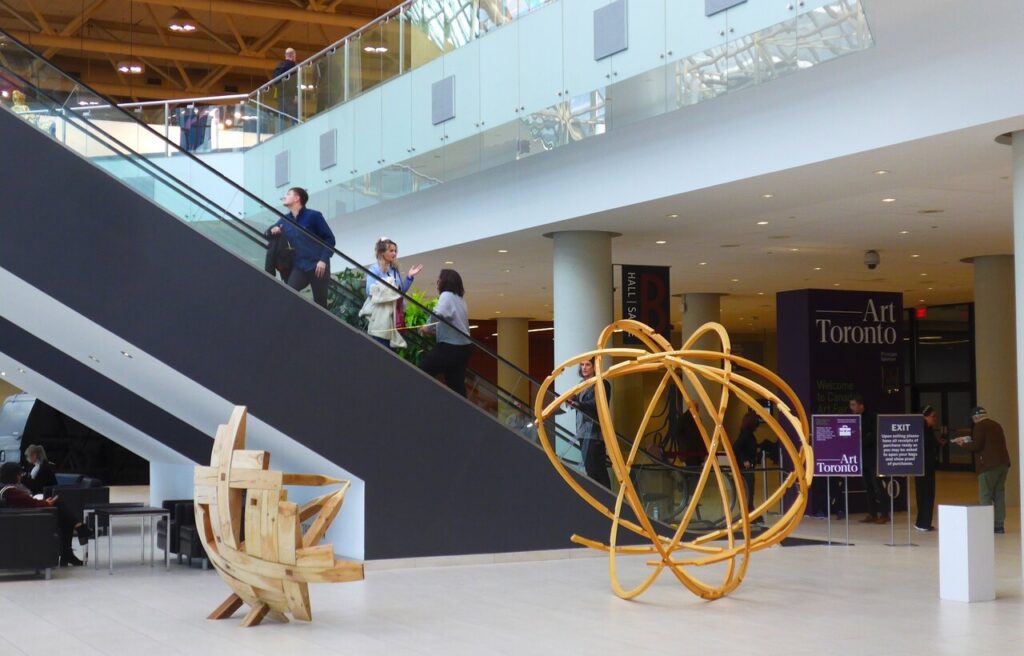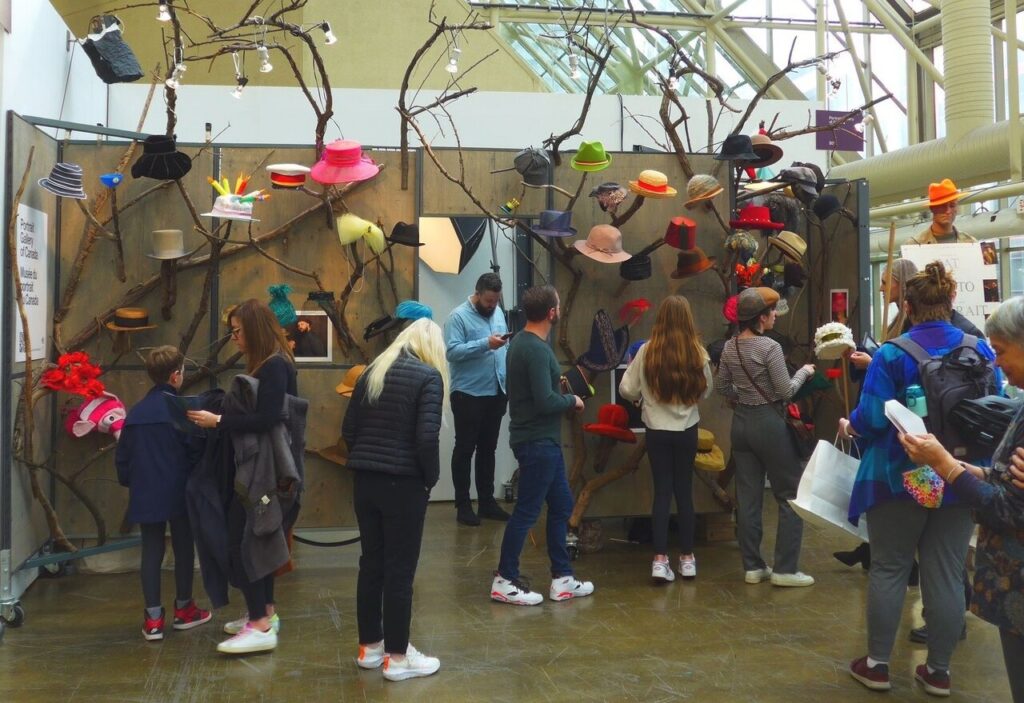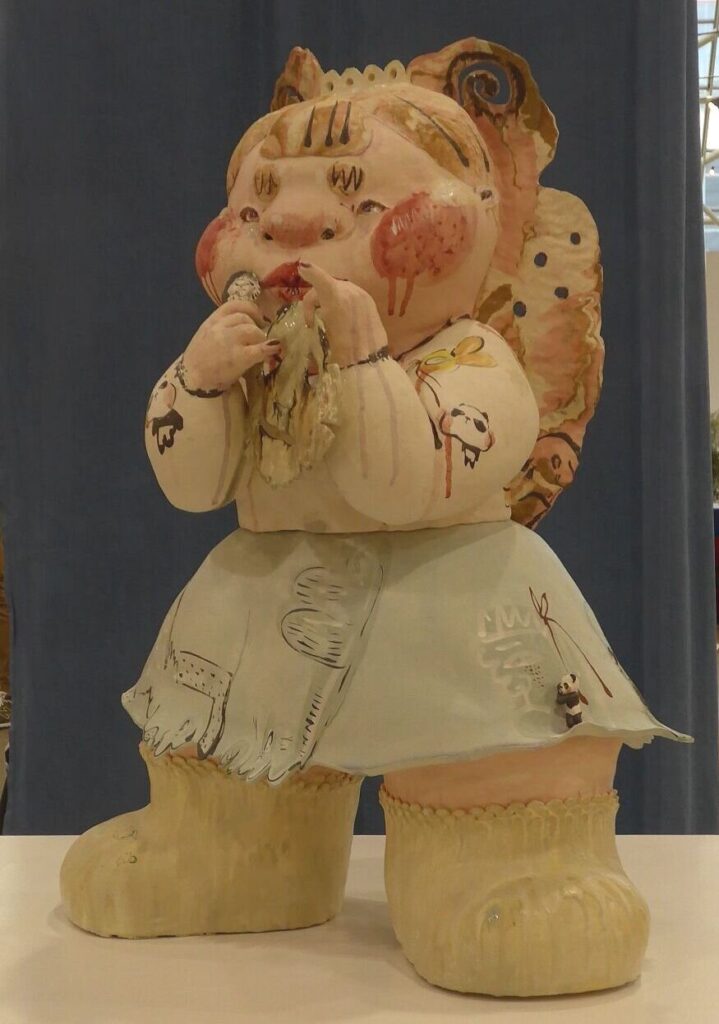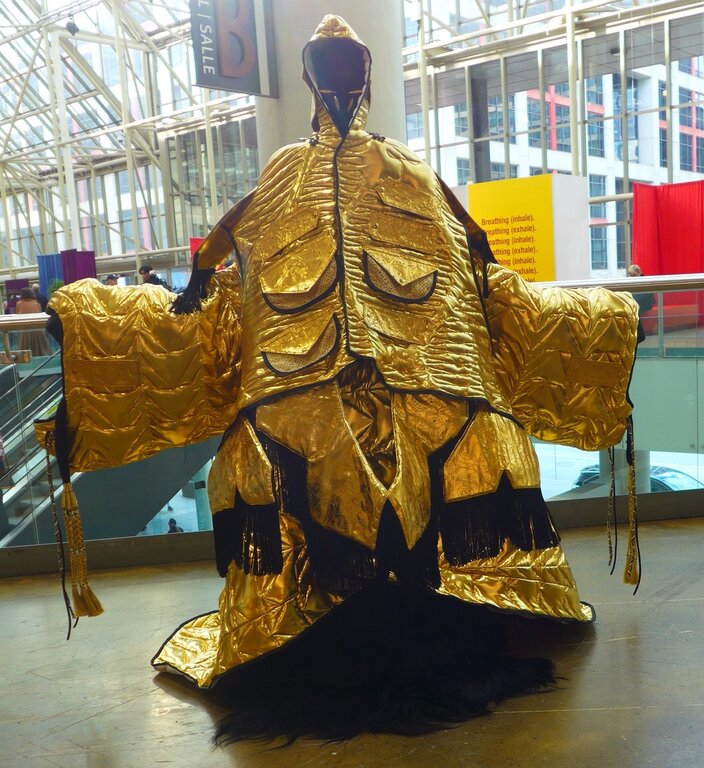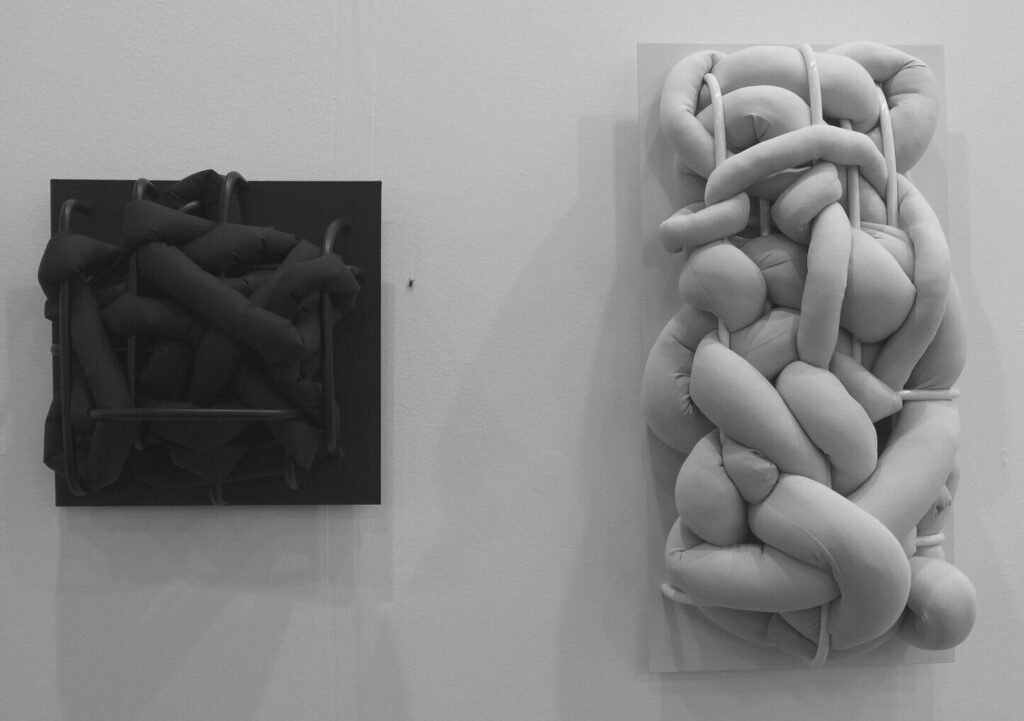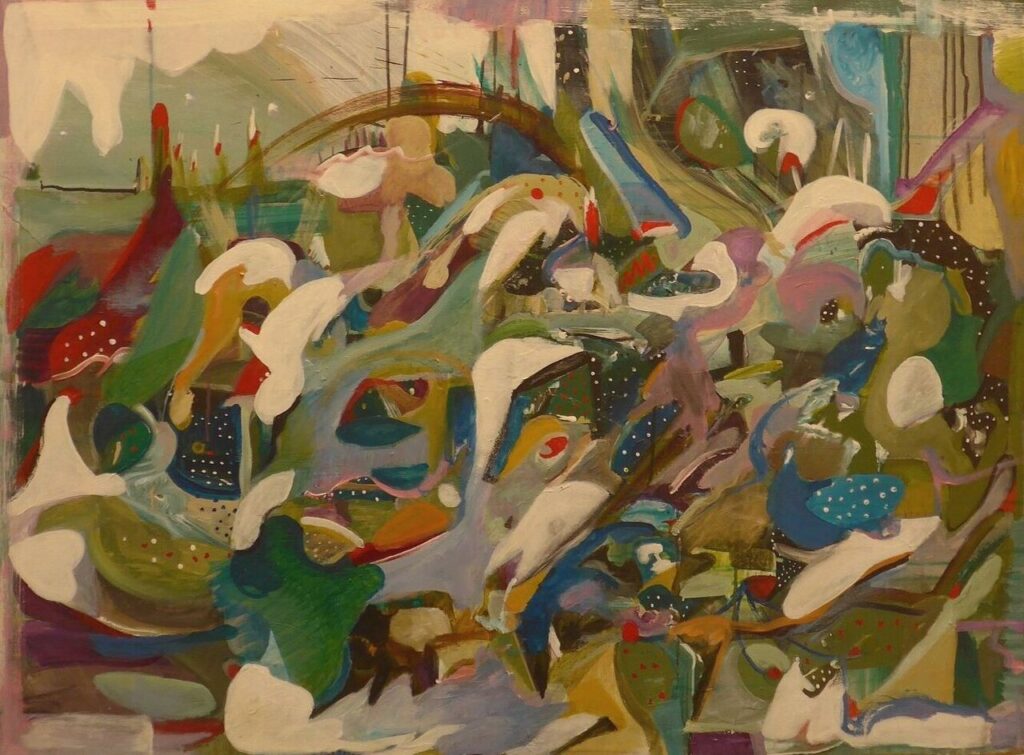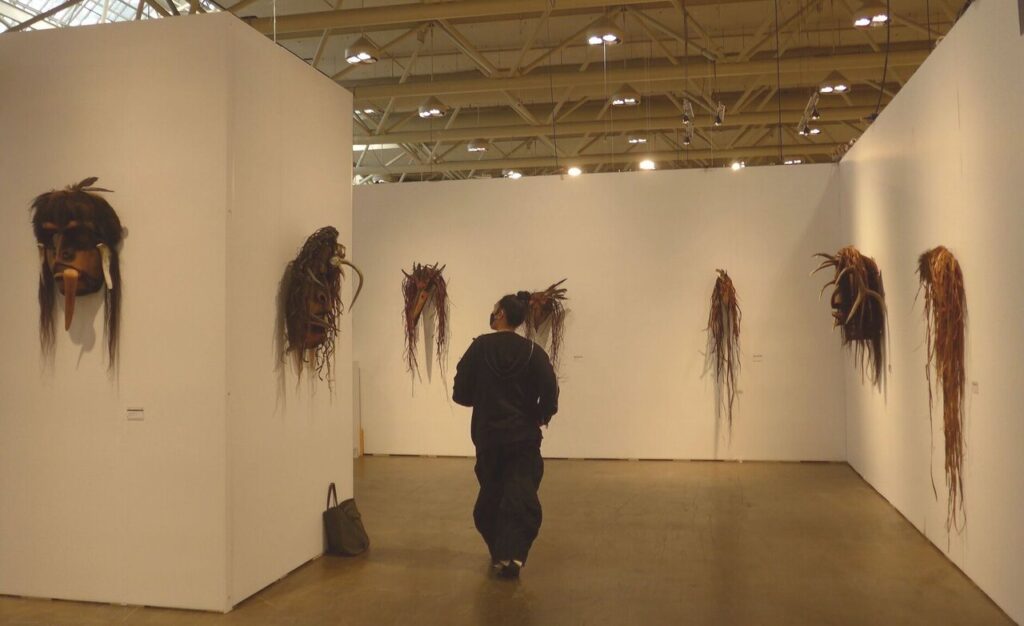The visitor arriving at Art Toronto, Toronto’s Art Fair may be forgiven for thinking she’s rolled into an international airport. Immediately upon entering the Convention Centre you’re confronted by a crowd of people who seem neither to be staying nor leaving, but hovering in that peculiarly human way; and in the background stand strategically placed sculptures by airy escalators. Indeed, you would not be mistaken for thinking you are a tourist. You are an art tourist.
To paraphrase Philip Larkin’s poem Here: the visitors ‘push through plate-glass swing doors to their desires’. Not the cheap suits, red kitchen-ware etc. that Larkin lists, but to expensive objects. As in upscale shopping malls – for this is at bottom a shopping mall – most visitors are here to ogle, to covet what they cannot afford.
Still, given the relatively pricey entrance fee our tourist expects to get some reward from her visit. At least she gets to see plenty of art – a veritable orgy of it, in fact. There are nearly ninety galleries represented, as well as several artists collectives, major collections and museums across the country. About ten percent of the galleries are from overseas, e.g., from Germany, the USA and the UK. So the emphasis is on homegrown talent, including well-known names such as Ken Lum, Kent Monkman and Edward Burtynsky. It is a who’s who of the local art establishment, though the Art Gallery of Ontario is conspicuously absent. Occasionally the booths aim mostly to entertain. For example, the booth of the Portrait Gallery of Canada is displaying a set of eccentric costume hats from which the public can pick one and get their photo taken wearing it.
Portrait Gallery of Canada
The art on display throughout the hall is simply all over the map. There is artisanal or decorative art such as Sami Tsang’s large-scale ceramics (Cooper Cole Gallery).
Sami Tsang’s large-scale ceramics, Cooper Cole Gallery, Toronto
At the other end of the spectrum there is art with very lofty goals, e.g., Nep Sidhu’s conceptually inspired sculpture She in Gold Form (Patel Brown Gallery). Sidhu, it is explained, sees the role of contemporary art as ‘to attempt to mobilize instances of connection to ameliorate damages caused by colonial histories…’.
Nep Sidhu, She in Gold Form, Patel Brown Gallery, Toronto
Some of the work is quiet, e.g., Isabel Yellin’s exquisite wall pieces (Towards Gallery).
Isabel Yellin’s wall pieces, Towards Gallery, Toronto
Others are brash, e.g., Haitian artist Clovis Alexandre Desvarieux’s painting C.V. (Galerie Hugues Charbonneau).
Clovis Alexandre Desvarieux’s painting C.V., Galerie Hugues Charbonneau, Montreal
The quantity of merchandise is overwhelming. There is so much competing for the visitor’s attention that galleries are tempted to display the closest things they have to eye-candy. The strategy does not lend itself to the contemplation of art, that is, slowly taking it in. Consequently, much of the art selected, though not all, is not intended to be experienced deeply – what you see is all there is. Yes, there is good art to be found and the dealers are happy to talk to visitors, but the whole ambience is not conducive to experiencing art in any authentic sense. Fast and glitzy best describes the show.
For me this issue raises the question of what the role of art is. The question is difficult as there is no one answer, given that art is open to be experienced in countless ways. But here is one instance that points to my concern: on display at Monte Clarke Gallery’s booth are masks crafted by West Coast ‘Stó:lō’ master carver Claude ‘Rocky’ LaRock. Such imposing masks, we are told, were originally used ceremonially as spiritual figures. But according to the description affixed to the booth’s wall: ‘LaRock departs from the ceremonial form to create an altogether different kind of mask intended not to transform the identity of a wearer but to transform the condition of the viewer.’ In other words, LaRock is making these masks to be seen on gallery walls. The original meaning behind such masks is stripped away, and the artefacts become instead indigenous-styled objects that are alluring. This illustrates contrasting roles of art. One might describe it as the distinction between substance and spectacle.
Masks by Claude ‘Rocky’ LaRock, Monte Clark Gallery, Vancouver
Of course, most art is not ceremonial in this way. Nonetheless, an important role of art is to enrich our lives, to communicate deeply with the viewer. The substance of such art stems from the artist’s intention, what she tries to communicate. On the other hand, art is spectacle when the artist’s intention is simply to produce something that looks like art, that is, to make objects purely on the basis that it attracts the viewer. While art that is pure spectacle can be entertaining, it amounts to empty entertainment – something that is quickly passed over. There is nothing wrong with pure entertainment, of course, but art can be far more than that. At its best it resonates.
Art fairs are becoming an increasingly important business model for galleries and dealers. The worry is that their ascendance will leave less and less room for slow art, as the market is crowded out by spectacle.
Text and photo: Hugh Alcock
*Art Toronto, Metro Toronto Convention Centre, 255 Front St W, Toronto. October 27-30, 2022.

